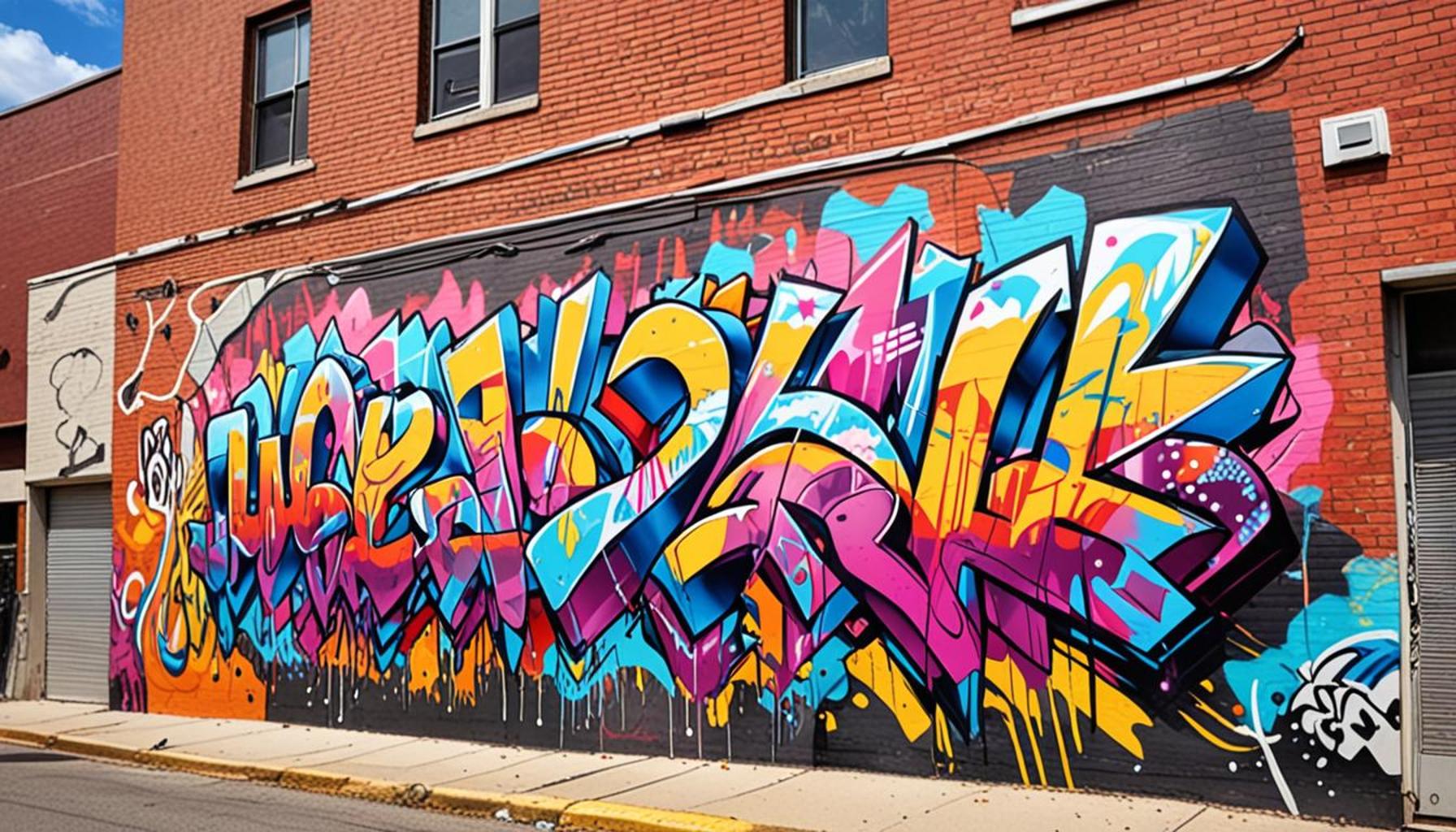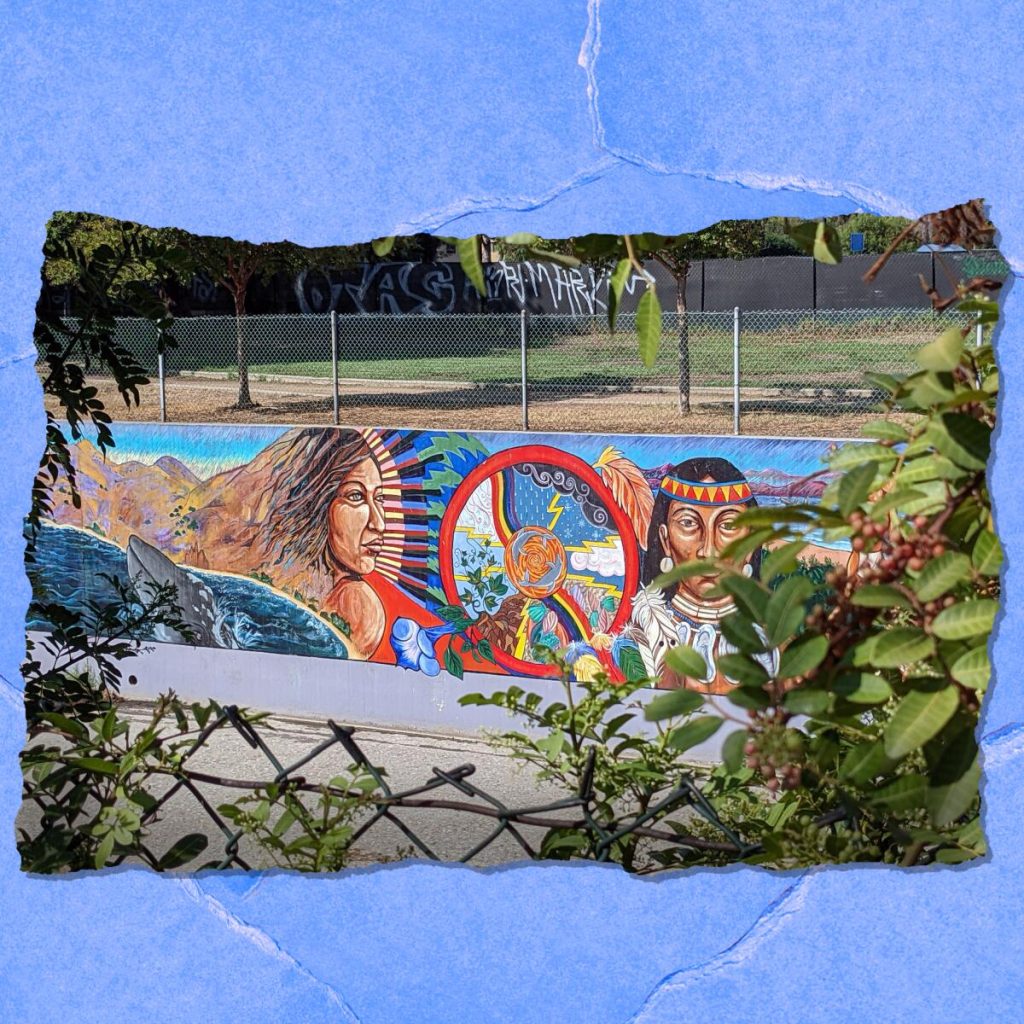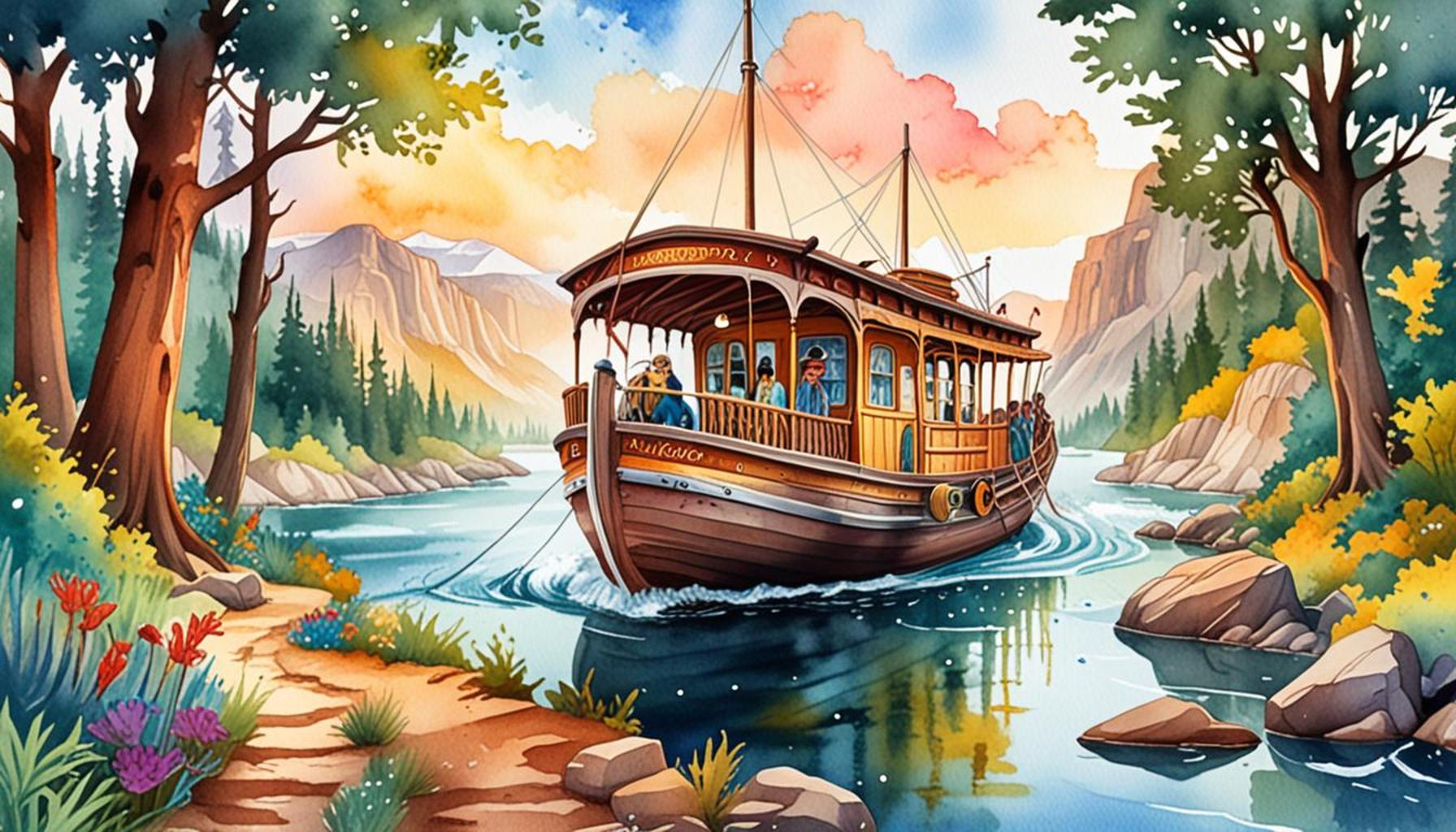Urban Art Routes: Exploring Murals and Graffiti in American Cities

Discover the World of Urban Art
American cities are evolving into vibrant canvases filled with murals and graffiti. Each street turns into a gallery, showcasing the creativity and culture of local artists. From coast to coast, urban art reflects the unique stories of communities.
Why Explore Urban Art Routes?
Urban art routes offer a dynamic way to engage with cities. Here are some key reasons to step out and explore:
- Visual Impact: These works of art are often larger than life and impossible to ignore. A towering mural can transform an ordinary alleyway into a striking focal point, drawing in those who may typically overlook their surroundings. For instance, the massive mural of a woman on the side of a building in Philadelphia, signalling strength and resilience, makes a bold statement in the urban landscape.
- Cultural Commentary: Urban art frequently addresses social issues, making statements that provoke thought. Artists often use their work to express views on topics such as inequality, environmentalism, and personal identity. A prime example is the Black Lives Matter mural in Washington, D.C., which has become a symbol of a global movement, showcasing how art can intersect with activism and public discourse.
- Community Connection: Experience the local vibe through murals that represent diverse narratives. Cities like San Francisco display murals that celebrate the rich history of the LGBTQ+ community, particularly in areas like the Castro District. Each mural carries the weight of the past while inspiring future generations.
Across the United States, cities like New York, Los Angeles, and Miami present some of the most renowned urban art scenes. For instance, New York’s Bushwick Collective showcases a kaleidoscope of murals and street art, featuring both established and emerging artists from around the world, making it a hotspot for art enthusiasts. Meanwhile, Los Angeles boasts the iconic Arts District, home to impressive street art that often involves collaboration between artists and businesses, giving a unique twist to the commercial landscape.
Get Ready to Discover
Embarking on an urban art route is more than just a walk; it is an immersive experience. Picture yourself meandering through vibrant neighborhoods, with each twist and turn revealing new artistry and hidden gems. These experiences are often complemented by local music and food, enhancing the overall flavor of the journey. Look out for guided tours that not only highlight renowned pieces but also delve into the stories behind them. It’s time to grab your camera and hit the streets to capture the creativity that breathes life into city walls, inviting reflection and inspiration.
In addition to the spontaneity of self-guided tours, participating in organized events like community art walks or festivals can provide deeper insights into the urban art scene. Engaging with the artists themselves during these events can enrich your understanding of their motivations and the messages conveyed through their work. Whether you are an art aficionado or a curious traveler, exploring urban art routes will undoubtedly leave you with a renewed appreciation for the creativity that thrives in our urban environments.

DIVE DEEPER: Click here to uncover more about America’s historical treasures
Notable Urban Art Destinations
As urban art continues to flourish, certain cities have emerged as hotspots for those eager to explore the dynamic interplay between street art and urban culture. Each destination offers a unique blend of local talent and diverse influences, transforming ordinary streets into extraordinary canvases. Here are some of the most noteworthy cities to consider on your urban art route:
- Philadelphia: Known as the birthplace of American murals, Philadelphia is home to the Mural Arts Program, which has created thousands of murals across the city. The visuals curate rich narratives that chronicle the city’s history and the voices of its residents. The iconic “We the People” mural in Queen Village exemplifies the city’s commitment to using art as a tool for social change.
- Miami: The vibrant neighborhoods of Wynwood and Little Havana are renowned for their street art and murals, especially during the annual Art Basel festival. The Wynwood Walls is a particularly notable space that features large-scale works from acclaimed international artists, turning the area into an open-air gallery that attracts art lovers worldwide.
- Los Angeles: The city boasts a thriving street art scene, particularly seen in the Arts District and Venice Beach. Murals here often reflect Hollywood’s influence and cultural diversity. The “Made in L.A.” mural project has been instrumental in showcasing local talent and addressing issues such as gentrification and identity.
- New Orleans: Known for its eclectic culture, New Orleans offers a distinct urban art experience. Murals are deeply integrated into the city’s lore, with themes inspired by jazz and local heritage. The artist collective known as Community Paint collaborates with local artists to beautify the city while addressing indigenous cultures and social issues.
Each city’s urban art scene not only highlights individual artistry but also embodies the community spirit and contemporary dialogues. A stroll through the streets reveals narrative arcs that connect the past, present, and future of these urban landscapes. This art is more than a fleeting visual experience; it is a form of storytelling that resonates deeply with residents and visitors alike.
Interaction with Art and Artists
Engaging with urban art also means connecting with the artists behind the work. Many cities host art fairs, workshops, and community events where artists share their processes and motivations. These interactions can provide invaluable insights into the intentions behind various pieces. For example, events like the Los Angeles Arts District Art Walk allow visitors the opportunity to meet creators, participate in discussions, and see art being made live.
Furthermore, the rise of urban art tours, both guided and self-directed, has made it easier than ever to immerse oneself in a city’s artistic offerings. Mapping out routes that highlight famous murals, hidden gems, or a specific theme can enhance the experience. Whether exploring vibrant neighborhoods or learning about social narratives, urban art routes serve as an accessible gateway to understand the pulse of American cities.
Discovering Vibrant Urban Cultures
Within the realm of urban art, murals and graffiti serve not only as aesthetic elements but also as profound reflections of the cultural fabric of American cities. As you traverse through neighborhoods adorned with striking visuals, you encounter stories that mirror social movements, community identity, and local history. These artistic expressions offer a unique lens into the societal pulse, revealing the challenges and triumphs of urban life.Every mural tells a story, and every spray can carries the weight of messages that resonate deeply within the community. Artists, often emerging from the neighborhoods they depict, use their craft to advocate for change, commemorate significant events, and bring awareness to social issues. For example, murals depicting significant civil rights figures or historical moments can be found in cities like Atlanta and Washington, D.C., turning urban landscapes into outdoor galleries that educate and inspire.Moreover, exploring urban art routes often leads to unexpected encounters with local artists. Many of them are eager to share their insights on the creative process and the meaning behind their works. This engagement fosters a sense of connection, allowing visitors to appreciate not just the art itself but also the dynamic communities that thrive around it.In addition to cultural insights, urban art routes also contribute to local economies by attracting tourism. Cities that embrace this artistic movement celebrate their murals through festivals and guided tours, thus enhancing community pride and inviting outsiders to experience their unique artistry. This growing trend indicates a burgeoning recognition of urban art as a legitimate form of expressive culture, one that deserves both preservation and celebration.
| Category | Advantages |
|---|---|
| Cultural Expression | Murals and graffiti showcase local stories and cultural heritage, connecting communities. |
| Economic Benefit | Urban art boosts local tourism, creating jobs and revitalizing neighborhoods. |
The allure of urban art routes continues to captivate both locals and tourists alike, promising enriching experiences and insights into the intimate narratives that define American cities. By wandering through these vibrant streets, one embarks on a journey not merely of exploration but of connection to the heart and soul of urban culture.
DIVE DEEPER: Click here to discover more about planning your festive adventures</p
Experiencing Urban Art Beyond the Mural
While murals often take center stage in discussions about urban art, graffiti and street installations play a vital role in painting a comprehensive picture of a city’s artistic landscape. The diversity of urban art forms adds layers of complexity, inviting both appreciation and critique. Engaging with these art forms can provide a deeper understanding of the communities they inhabit and the political and social statements they convey.
Graffiti: The Voice of the Streets
Graffiti, often misunderstood, is a powerful form of expression that speaks to the struggles and aspirations of urban citizens. Cities like New York and San Francisco have long been at the forefront of graffiti culture. In NYC, neighborhoods like the Lower East Side or Bushwick are brimming with vibrant tags and pieces that reflect the city’s changing identity. The storied walls of 5 Pointz, once a renowned graffiti mecca, highlighted the dynamic and often ephemeral nature of this art form until its controversial demolition in 2014.
In San Francisco, the Mission District showcases an incredible array of muralists and graffiti artists. The ’Mi Vida Loca’ mural, which captures the lives of the Latinx community, stands as a testament to the local culture, echoing themes of identity, belonging, and resilience.
Street Installations and Mixed Media
Beyond traditional murals and graffiti, urban art often encompasses street installations and mixed media art. These art forms invite participants to engage more interactively with the surroundings. One of the prominent installations can be found in Chicago, where artist Marcelo Garcia created “The Chicago River” installation that interacts with nature while celebrating the city’s history. This kind of art encourages not just viewing but engaging with the environment, enhancing visitor experiences while amplifying the stories that each piece has to tell.
Interactive Art Tours and Technology’s Role
The intersection of urban art and technology has birthed innovative ways for enthusiasts to explore the vibrant scenes within American cities. Interactive apps, such as Street Art Cities, allow users to create personal routes, share their discoveries, and even participate in virtual graffiti fights, offering an engaging layer to the traditional art exploration. Using GPS technology, visitors can be guided to lesser-known murals and installations that often go unnoticed, ensuring that art enthusiasts uncover both popular and hidden gems within the urban landscape.
Moreover, the emergence of augmented reality (AR) has transformed the way people perceive urban art. Certain installations can include AR elements that animate the art, providing backstories or turning static pieces into dynamic experiences. Utilizing tools like QR codes or mobile applications can enhance a street-art journey, allowing users to delve into the history, techniques, and messages conveyed through the lenses of various artists.
Community Empowerment through Urban Art
Urban art routes often represent much more than aesthetic values; they cultivate community dialogue and empowerment. Programs like the Public Art Challenge in cities across the nation have fostered local engagement, pulling together diverse groups of artists to collaborate on projects that resonate with their community’s feelings and identity. By encouraging the inclusion of resident voices, urban art policies promote a more equitable representation—an artistic reflection of the collective narratives that shape neighborhoods.
Exploring urban art routes in American cities unveils stories interwoven with culture, identity, and social commentary. By engaging in discussions surrounding these artistic endeavors, participants can better appreciate the complexities and nuances that define contemporary urban living through the lens of art. Whether one identifies as an art aficionado or a curious wanderer, each step through the streets of these artistic meccas fosters a deeper connection to the cities themselves.
DISCOVER MORE: Click here to delve deeper
Conclusion: The Vibrant Tapestry of Urban Art
In conclusion, the exploration of urban art routes across American cities reveals a rich and vibrant tapestry woven from the voices of diverse communities. By engaging with murals, graffiti, and street art installations, enthusiasts gain insight into the cultural narratives that shape urban landscapes. Rather than simply existing as visual ornaments, these art forms serve as powerful conduits of social commentary, political expression, and community identity.
As technology continues to enhance our interaction with these artistic expressions—through apps, augmented reality, and social media—urban art becomes more accessible and interactive, encouraging a deeper exploration. The evolution of urban art reflects the ever-changing dynamics of city life, inviting us all to participate in a dialogue that transcends traditional art forms.
Ultimately, urban art routes serve not only as a guide through the streets but also as an invitation to understand the living histories of the cities we inhabit. By promoting grassroots involvement and celebrating local voices, urban art fosters a sense of belonging and community ownership. As you embark on your journey through these artistic corridors, remember that each piece carries stories waiting to be uncovered—stories that reflect the essence of urban life and inspire connection in an ever-evolving world.


